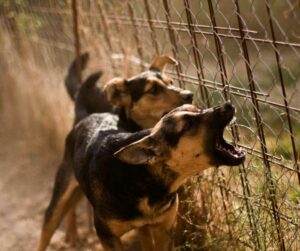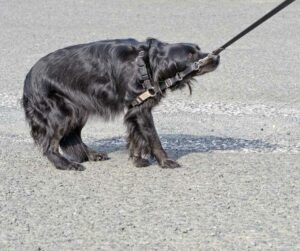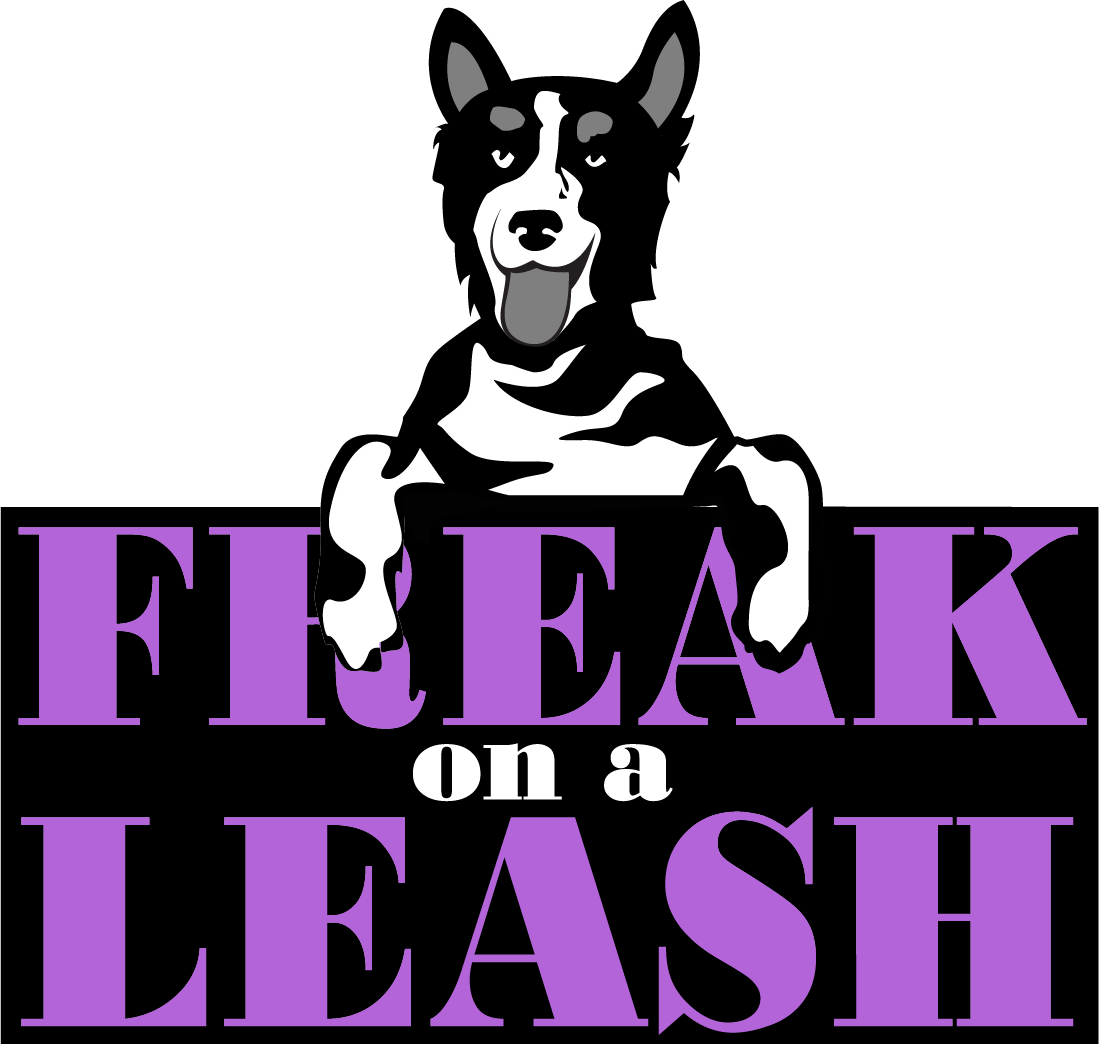Understanding the underlying causes of common behavior issues in dogs
As dog owners, it is important to understand the underlying causes of common behavior issues in our canine companions. By delving into these causes, we can better address and tackle these issues effectively.
 Consistency is key when it comes to training dogs and addressing behavior issues. By setting clear rules and expectations, we can help our dogs understand what we are expecting of them. Positive reinforcement plays an important role in this process, as it increases desired behaviors and helps build a stronger bond between us and our dogs. We will discuss some of the most common behavior issues and how they can be addressed.
Consistency is key when it comes to training dogs and addressing behavior issues. By setting clear rules and expectations, we can help our dogs understand what we are expecting of them. Positive reinforcement plays an important role in this process, as it increases desired behaviors and helps build a stronger bond between us and our dogs. We will discuss some of the most common behavior issues and how they can be addressed.
1. Addressing separation anxiety and excessive barking
Separation anxiety and excessive barking are two common behavior issues that many dog owners face. Separation anxiety occurs when dogs become anxious or stressed when they are left alone. This can result in destructive behaviors, such as chewing furniture or excessive barking.
To address separation anxiety, it is important to gradually acclimate your dog to being alone. Start by leaving them for short periods of time and gradually increase the duration. Try to establish a routine for when you need to leave your dog alone. Make sure your dog has been exercised and provide them with engaging toys or puzzles to keep them occupied while you’re away. Creating a calm and comfortable environment with soothing music or a pheromone diffuser can also help alleviate their anxiety. You may need to block out outside noises using a radio or television.
Excessive barking can also be the result of boredom, fear, or territorial behavior. To address this issue, it’s important to identify the root cause. Ensuring your dog receives enough mental stimulation and physical exercise can help alleviate boredom-related barking. Creating a safe and secure environment for your dog can also help reduce fear-based or territorial barking.
 2. Dealing with leash pulling and reactive behavior
2. Dealing with leash pulling and reactive behavior
Leash pulling and reactive behavior can make walking your dog a challenging experience. Leash pulling is often caused by excitement, not enough exercise, or lack of training, while reactive behavior can stem from fear or insecurity. To address these issues, consistency and positive reinforcement are key.
For leash pulling, consider using treats on walks to keep your dog close or trying a longer leash so your pup is able to explore more. Practice loose leash walking after some rigorous play and reward your dog whenever they walk calmly by your side. Consistency is important – try to avoid allowing your dog to pull on the leash at any time. Gradually increase the distractions during walks to help them maintain focus and minimize pulling behavior.
Reactive behavior, such as barking or lunging at other dogs or strangers, can be addressed through desensitization and counter-conditioning techniques. Start by gradually exposing your dog to the triggering stimuli at a distance where they feel comfortable and can remain calm. Reward them with treats or praise for calm behavior and not reacting negatively.
As your dog becomes more relaxed in the presence of the trigger, you can slowly decrease the distance between them and the stimulus. This process should be done at a pace that allows your dog to remain under their anxiety threshold.
In addition to these training techniques, providing ample physical exercise and mental stimulation can help reduce reactive behavior. Engaging in activities such as obedience training, puzzle toys, or interactive play sessions can help keep your dog mentally and physically stimulated. This not only helps your dog channel energy in a positive way, but also builds confidence which can reduce reactive behavior.
Remember to remain patient and consistent throughout the training process. It may take time for your dog to overcome these challenges, but with dedication and positive reinforcement, you will see improvements.
Seeking the guidance of a professional dog trainer or behavior consultant can also be helpful if you are struggling to address these behaviors on your own. A professional can provide personalized advice and support to help you and your dog navigate through these challenges. They will be able to assess your dog’s behavior and create a customized training plan tailored to their specific needs.
 3. Tips for managing aggressive behavior towards humans or other animals
3. Tips for managing aggressive behavior towards humans or other animals
When it comes to managing aggressive behavior towards humans or other animals, there are several key things to keep in mind. First and foremost, it is essential to prioritize safety for all parties involved. If you feel that the situation is unsafe or beyond your ability to handle, do not hesitate to seek professional help from a qualified dog trainer or behavior consultant.
In the meantime, here are some general tips:
1. Recognize the triggers: Pay close attention to what triggers your dog’s aggression. Understanding the specific situations or stimuli that provoke your dog’s aggressive behavior can help you better manage and avoid those triggers.
2. Create a safe environment: Ensure that your dog is in a secure and controlled environment to prevent any potential harm to themselves or others. This may include using crates or baby gates to create boundaries when necessary.
3. Avoid confrontation: When managing aggressive behavior, it is important to avoid confrontations that can escalate the situation. If you sense tension or aggression building, try redirecting your dog’s attention to something positive, such as a favorite toy or treat.
4. Providing enough exercise: Regular exercise will help to reduce the amount of time your dog spends feeling stressed and may help to curb aggressive behavior.
5. Use positive reinforcement: Reward your dog for calm and non-aggressive behavior. This helps to reinforce desired behaviors and creates an association between those behaviors and positive outcomes. Consider using treats, verbal praise, physical affection, or playtime as rewards for your dog’s good behavior. Treats, praise, and petting can help to modify your dog’s behavior and encourage calmness.
5. Seek professional help: If your dog’s aggressive behavior persists or worsens despite your best efforts, it may be necessary to consult with a professional dog trainer or behavior professional.
Remember, managing aggressive behavior takes time, consistency, and patience. It is important to remain calm and avoid punishment-based training methods that can further escalate the behavior. By understanding and addressing the underlying triggers of aggression, you can work towards creating a safe and harmonious environment for your dog. With proper management and professional guidance, there is hope for improvement in your dog’s behavior. Remember to stay committed to positive reinforcement techniques and seek help when needed. Your dedication will make a significant difference in your dog’s well-being and the overall peace of your household.
4. Helping your dog overcome fear and anxiety-related behaviors
Fear and anxiety-related behaviors can be challenging to address, but with patience and understanding, you can help your dog overcome them. Here are some strategies to consider:
1. Create a safe space: Providing your dog with a designated area that they can retreat to when they feel anxious or scared can be very helpful. This could be a comfortable crate or a quiet room with their bed and toys. Make sure this space is calm, secure, and free from any potential triggers.
2. Gradual exposure: Introduce your dog to fearful situations in a gradual and controlled manner. Start by exposing them to mild versions of the trigger and gradually increase the intensity as they become more comfortable. For example, if your dog is afraid of loud noises, start by playing a recording of the noise at a low volume and gradually increase it over time.
3. Counter-conditioning: Pair the trigger with something positive to change your dog’s emotional response. For instance, if your dog is afraid of strangers, have a friend approach slowly while giving treats or engaging in a fun activity. This will help your dog associate the trigger with something pleasant.
4. Desensitization: Slowly desensitize your dog to their fears by exposing them to the trigger in a controlled and safe environment. This involves gradually increasing their exposure to the trigger while keeping them calm and providing positive reinforcement. For example, if your dog is afraid of car rides, start by allowing them to sit in a parked car with treats or toys. Gradually increase the duration of time spent in the car and eventually start taking short drives around the block.
5. Professional help: If your dog’s fear and anxiety persists despite your best efforts, it may be beneficial to seek professional help from a qualified dog behaviorist or trainer. They can provide you with personalized guidance and techniques to help address your dog’s specific fears and anxieties. A professional will be able to assess your dog’s behavior, develop a tailored training plan, and guide you through the process of helping your dog overcome their fears. They may also be able to recommend additional strategies or techniques that can be effective in managing fear-based behaviors. Remember, every dog is unique, and what works for one may not work for another. With patience, consistency, and the right professional guidance, you can help your dog feel more comfortable and secure in the face of their fears.
 5. Managing destructive chewing and digging habits
5. Managing destructive chewing and digging habits
Managing destructive chewing and digging habits in dogs requires understanding the underlying causes and implementing effective strategies. Here are some tips to help you address these behaviors:
1. Provide appropriate outlets: Dogs often chew and dig out of boredom or excess energy. Make sure your dog receives enough mental and physical stimulation through regular exercise, playtime, and interactive toys. This will help them expand their energy through more constructive activities.
2. Supervise and redirect: When you see your dog engaging in destructive chewing, redirect their attention to an appropriate chew toy or interactive game. This will help them understand what is acceptable to engage with. Try to keep your dog’s environment clean and free of clutter. If your dog is incessantly chewing or consuming non-food items, rule out medical issues like Pica through your veterinarian.
3. Provide a designated digging area: If your dog enjoys digging, create a specific area in your yard where they are allowed to dig. Fill it with soft soil or sand and bury toys or treats for them to find. This will fulfill their natural instinct while keeping your garden safe.
4. Proper confinement: When you cannot supervise your dog, confine them in a safe and dog-proofed area such as a crate or a designated playpen. This will prevent them from engaging in destructive behaviors when you’re not around.
5. Address possible separation anxiety: Destructive chewing and digging can be signs of separation anxiety. If your dog exhibits these behaviors when left alone, consult a professional to help you address their anxiety and provide appropriate training techniques.
6. Jumping on people when they come to visit
Dogs learn to jump on people when they are puppies because this is behavior typically results in them receiving attention from people. Start teaching your dog alternative behaviors and provide more positive reinforcement for those than the jumping. Training your dog to sit or to go to a mat and lie down when someone comes in is one example. You can also use a leash or a baby gate to block access to the new person coming into your home, which can give your dog some time to calm down enough to greet the visitor politely. Providing your dog with a novel chew toy, lick mat, or a stuffed Kong to engage with every time a visitor comes can also help your dog de-escalate, and pairs a visitor arriving with a calming activity.

